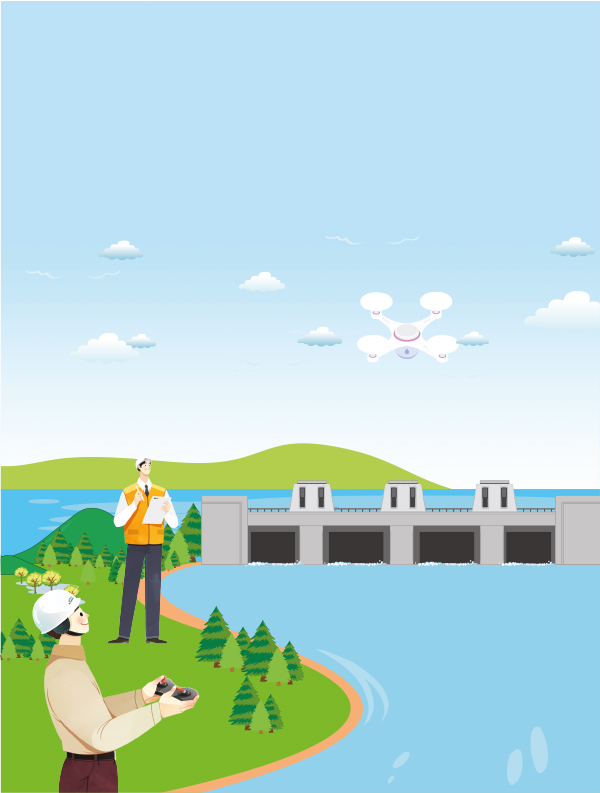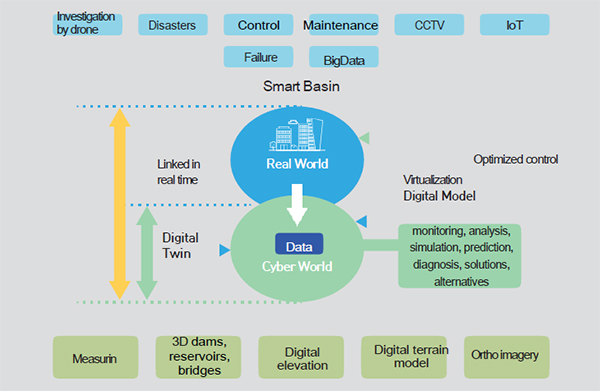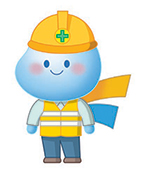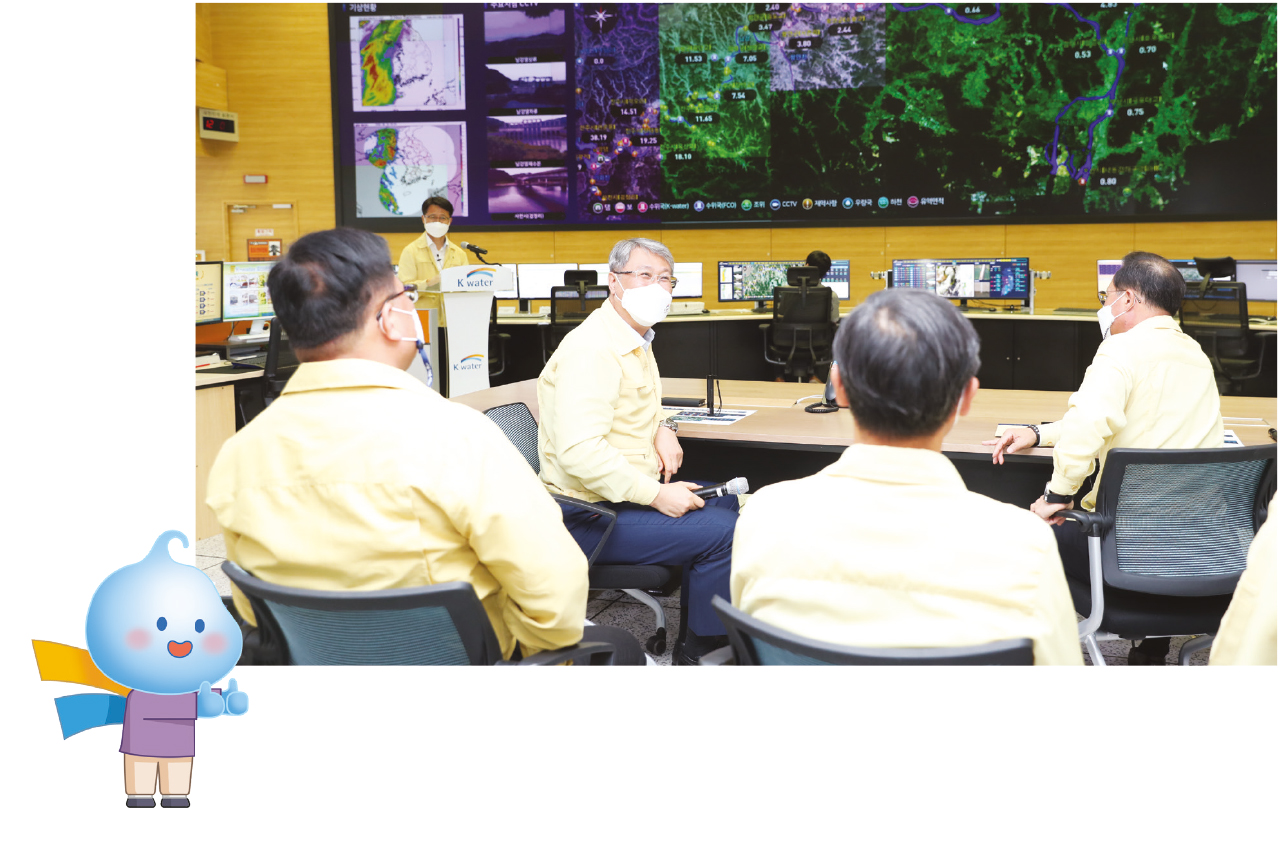
- Water, Nature and Humankind
- K-water Report
-
“K-water leverages cutting-edge
technology to be a pioneer in preventing water disasters.”
- Written by. Choi Hang-jwa
- Source by. K-water
- Climate disasters including droughts and floods are increasing in frequency and severity due to climate change. Keeping their citizens safe from disasters is a top priority for countries around the world. K-water has availed of the latest technology including big data and AI to respond proactively to water disasters and keep people safe.

Digital Twin-Based GARAM +
Water-related disasters are increasing in frequency amid accelerating climate change. In 2020, there was the longest monsoon season in history which lasted 54days and localized torrential downpours left many areas flooded. As a result, it is becoming increasingly important to embrace digital water management system technology in order to overcome the limitations of the existing one. In addition, the Korean government announced the Korean New Deal in July 2020 to achieve the technology advancement of the economic structure and create sustainable jobs. One of the key agendas of the Korean New Deal is “digital twin” applications.
K-water has introduced the digital twin technology that integrates dams, basins and rivers into a single system in order to prevent water disasters more effectively and improve the efficiency of dam operations. Specifically, K-water launched Digital GARAM+ on March 11. It is a water management platform that integrates industry 4.0 technologies including digital twin to respond to uncertainties triggered by climate change and enhance dam operation efficiency through a high-tech decision-making system. The platform has been introduced for pilot operations in the Seomjingang River basin.
It links and analyzes real-time weather and water-gate data, synchronizes the virtual and real world in real time, and performs simulations to make decisions on how to operate dams. It consists of six parts including monitoring of dams, rivers, floods & droughts, water cycle, water quality, and dam safety management.
Key functions include monitoring water management and performing facility inspections based on a 3D map, managing restrictions during the flood season, keeping track of historical flood data, and making decisions on dam operations.
Digital GARAM+ plays a central role in preventing water-related disasters by collecting water management data including dam operations & weather data, and making more accurate decisions to ensure more efficient & safe water management.
K-water plans to lead Korea’s digital water management including implementation of digital twin technology, and to supplement a competitive edge in the digital water management through technology-driven cooperation including joint development of core technology with the private sector.
Creating a digital twin water management platform in the Seomjingang River basin

Smart dam safety management using cutting-edge technology
Dam safety management has been increasingly heralded as disasters and safety accidents involving dams continue to occur around the world. In January 2019, a localized torrential rainfall caused a tailing dam in a mine collapse. As a result, a large amount of mud was released and swept across mine fields and villages, leaving dozens of people dead and 300 missing in its wake. In May 2020, Michigan in the U.S. suffered a disastrous flood due to the heaviest rainfall in 500years, causing the Edenville and Sanford dams to fail. More than 10,000people were evacuated, and the downtown was submerged, causing some 2.0billion dollars in damage. Given that some of the dams in Korea are over 40years old, safety management of its dams has manifested as a highly pressing issue.
The Ministry of Environment and K-water are working together on the smart dam safety management project instating smart technologies including an AI and big data analysis system, two main areas driving wave of the 4th Industrial Revolution. The aim of the project is to proactively manage the safety of dams and create jobs. The key to ensuring dam safety is proactive repair, reinforcement, and functional enhancement, while cutting-edge technology is being instated to achieve this.
In the previously used people-oriented inspection system, a person physically descended the dam itself with a rope and performed a visual inspection up close. This type of inspection entailed risks of accidents, and inspections were not possible on parts of the dam hard to access. In addition, the bottom of the dam was submerged, so a diver who is not a dam expert had to be hired for an inspection. To address these problems, K-water employs drones, which film aerial and underwater videos and experts analyze these 3D videos to identify damages to a dam. Using drones for inspections has eliminated inspection blind spots and made real-time, accurate inspections feasible. So the results of safety inspection have become more objective and accurate.
Real-time monitoring is also possible under the smart dam safety management system. Previously, changes to dam structures were measured with a light wave instrument that measures distances based on the speed of reflected light. However, weather conditions such as fog make it impossible to measure at all, and the measuring method was prone to errors. K-water has installed the latest GPS device at Angae dam in Gyeongju City and Jangheung dam in South Jeolla province for pilot operations, and the margin of error has been significantly reduced. The GPS device will be used for all dams across the country by 2024. A safety management platform is also being operated. The digital twin system that uses big data and AI makes safety inspections and management more accurate and systematic. K-water has successfully built a smart dam safety management platform for 37dams, which will also be introduced for dams managed by local municipalities and other organizations, creating a safety management technology hub.

4th Industrial Revolution technologies for smart dam safety management

Integrated Water Management Monitoring Center, Control Tower for Water Management in Korea
K-water has been at the forefront of preventing water disasters by responding proactively to climate change and efficiently managing water levels. K-water created the Integrated Water Management Monitoring Center in line with increasing abnormal weather events such as floods and droughts. The center is responsible for closely monitoring over 50 water resource facilities across the country and water supply systems operated by metropolitan cities and local municipalities. The latest ICT-based water management systems allow K-water to monitor and manage water more effectively from the upper source to the mouth of a river basin around the clock. The center provides more accurate data in real time and acts as a control tower for water management as it has 65% of domestic water supply, 95% of flood control, and 60% of hydroelectric power generation under its management.
Based on the combination of the water resource management know-how and scientific analysis, K-water produces and provides the basic data on water resources and water supply systems to water facility operators. The basic data together with short & long-term rainfall forecast data is used to perform optimized water management including controlling floods, responding to droughts, supplying water, and generating hydroelectric power, based on real-time analysis and a timely decision-making process.
In order to effectively respond to algal bloom and water quality issues, K-water collects and analyzes water samples on a regular basis, analyzes the scope of algal bloom based on data sent from artificial satellites, and conducts systematic monitoring via surveillance cameras set up in areas prone to severe algal blooms. Based on water quality data collected from monitoring and the results of numerical model analysis, K-water makes optimal decisions on the operation of dams and water reservoirs, and develops water quality improvement policies in a way that links water traffic and quality.
K-water avails of its water management system to help local municipalities especially vulnerable to floods minimize damages in it efforts to proactively take measures to prevent water disasters in the country.


